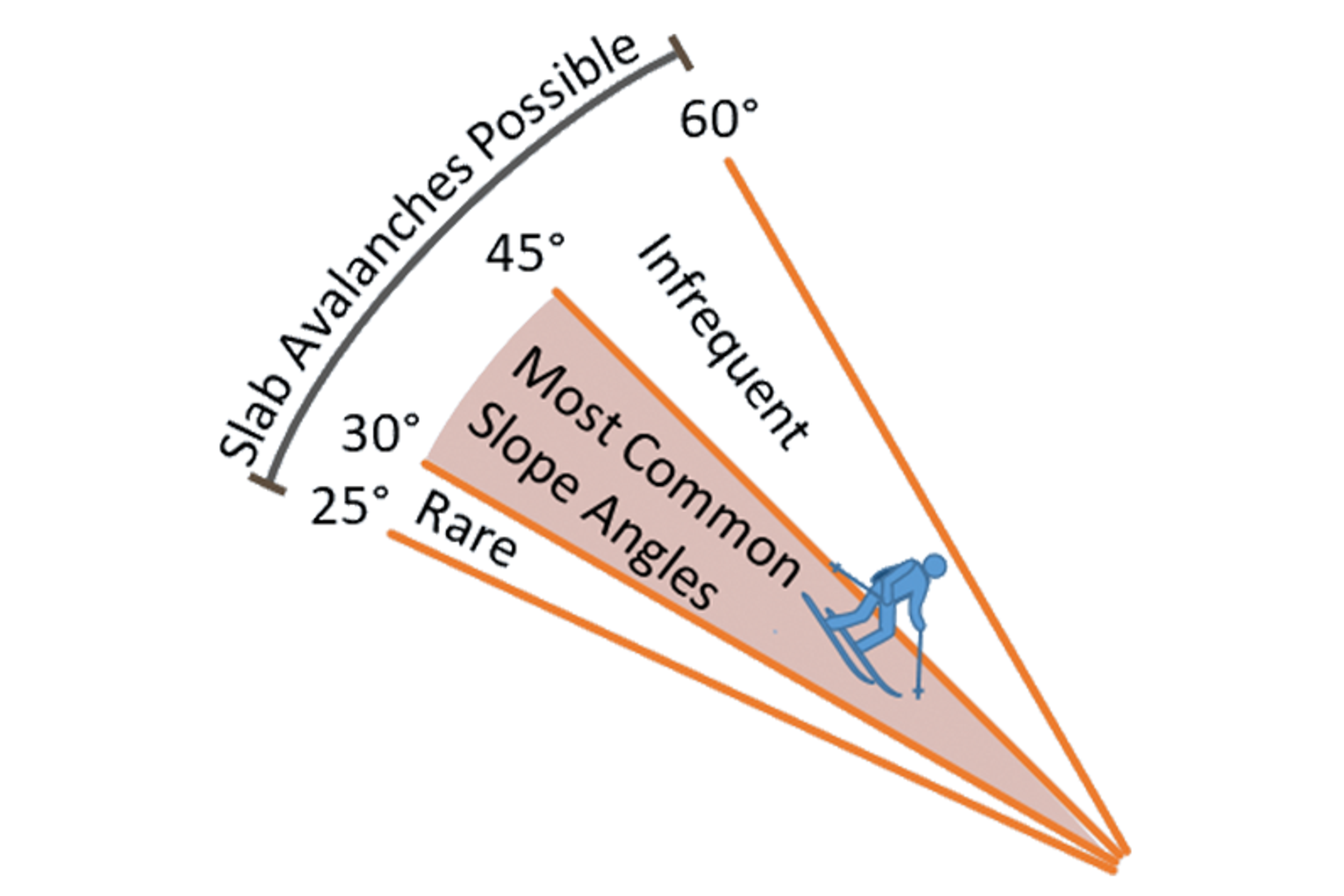Slope Angle

Slope angle is the most significant characteristic of an avalanche slope. The vast majority of avalanches take place on slopes between 30° and 45°, which is about the steepness of a black run on a ski hill. It’s also the preferred terrain for many backcountry enthusiasts.
Avalanches can happen on less steep slopes between 25° and 30°, but they are not as common. On slopes steeper than 45°, snow usually slides away frequently, so slabs are less likely to form. Keep in mind that an avalanche that starts in steep terrain can run across a flat slope and even travel uphill.
Dig Deeper: Identifying Slope Angle +
Learning how to assess the steepness of a slope is a good skill to develop. One inexpensive tool that will show you the steepness of a slope is a clinometer (or inclinometer). There are smartphone apps that do this as well.
